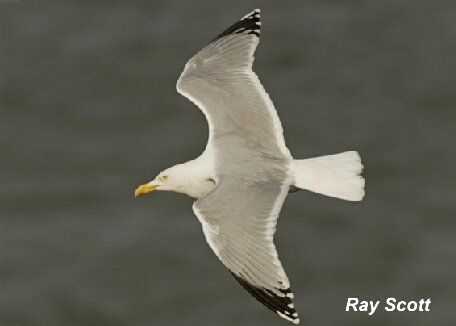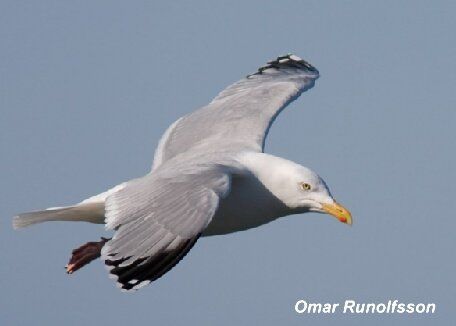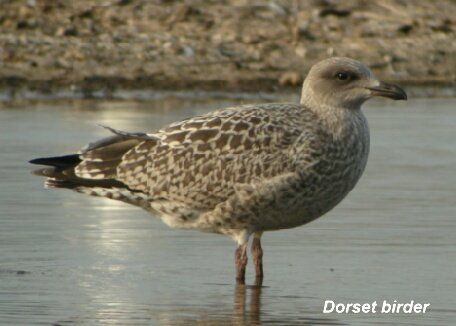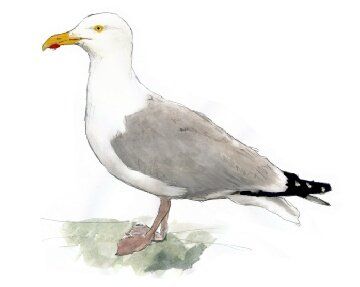The European herring gull (Larus argentatus) is a large gull, up to 66 cm (26 in) long. One of the best-known of all gulls along the shores of Western Europe, it was once abundant. It breeds across Northern Europe, Western Europe, Central Europe, Eastern Europe, Scandinavia, and the Baltic states. Some European herring gulls, especially those resident in colder areas, migrate further south in winter, but many are permanent residents, e.g. in Ireland, Britain, Iceland, or on the North Sea shores. They have a varied diet, including fish, crustaceans, chips, and dead animals, as well as some plants.
While herring gull numbers appear to have been harmed in recent years, possibly by fish population declines and competition, they have proved able to survive in human-adapted areas and can often be seen in towns acting as scavengers.
Their scientific name is from Latin. Larus appears to have referred to a gull or other large seabird and argentatus means decorated with silver.The taxonomy of the herring gull/lesser black-backed gull complex is very complicated, with different authorities recognising between two and eight species.
This group has a ring distribution around the Northern Hemisphere. Differences between adjacent forms in this ring are fairly small, but by the time the circuit is completed, the end members, herring gull and lesser black-backed gull, are clearly different species. The terminal forms do not interbreed, though they coexist in the same localities.
The male European herring gull is 60–67 cm (24–26 in) long and weighs 1,050–1,525 g (2.315–3.362 lb), while the female is 55–62 cm (22–24 in) and weighs 710–1,100 g (1.57–2.43 lb). The wingspan can range from 125 to 155 cm (49 to 61 in). Among standard measurements, the wing chord is 38 to 48 cm (15 to 19 in), the bill is 4.4 to 6.5 cm (1.7 to 2.6 in) and the tarsus is 5.3 to 7.5 cm (2.1 to 3.0 in). Adults in breeding plumage have a light grey back and upper wings and white head and underparts. The wingtips are black with white spots known as "mirrors". The bill is yellow with a red spot and a ring of bare yellow skin is seen around the pale eye. The legs are normally pink at all ages, but can be yellowish, particularly in the Baltic population, which was formerly regarded as a separate subspecies "L. a. omissus". Non-breeding adults have brown streaks on their heads and necks. Male and female plumage are identical at all stages of development, but adult males are often larger.
Juvenile and first-winter birds are mainly brown with darker streaks and have a dark bill and eyes. Second-winter birds have a whiter head and underparts with less streaking and the back is grey. Third-winter individuals are similar to adults, but retain some of the features of immature birds such as brown feathers in the wings and dark markings on the bill. The European herring gull attains adult plumage and reaches sexual maturity at an average age of four years.
Wikipedia
European Herring Gull illustration by MiE Fielding







